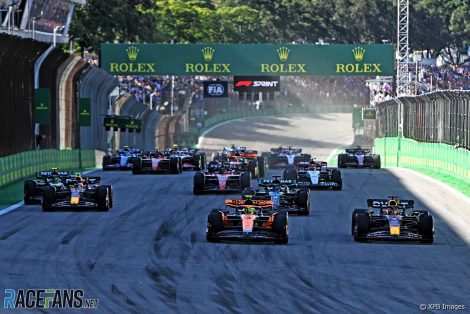Formula 1’s divisive sprint race format clearly appeals to the six grand prix promoters who have shelled out a reported $4 million each on top of their annual fees to host them.
But are they – and the spectators who turn up to sprint events – actually getting good value for money.
One event which does not seem destined to become a sprint round in the future is the Canadian Grand Prix at the Circuit Gilles Villeneuve. The event’s long-tenured promoter, Francois Dumontier, admitted while attending the previous sprint weekend in Miami that he had little desire to lobby for his own race to become a sprint in future.
“I am a fan of the current format with free practice, qualifying, and the race,” said Dumontier. “It’s traditional, but it’s the right one.”
Beyond the concern of having to pay extra fees for the privilege of hosting a sprint weekend, Dumontier also questions if the format provides more value for money for racegoers than a conventional grand prix weekend.
“Formula 1 says we see the cars run as often with five sessions on the circuit,” he said. “But in fact, they are shorter.”
A typical grand prix weekend consists of five Formula 1 sessions: two free practice sessions of an hour on Friday, a third practice session on Saturday morning, also an hour long, then the three-stage qualifying session on Saturday afternoon before the grand prix on Sunday.
Advert | Become a RaceFans supporter and
The sprint format has changed every single year since it was first introduced midway through the 2021 season. Although the schedule has changed in 2024, the current format largely follows that which was first introduced in 2023.

Currently, sprint weekends also have five separate sessions over the weekend, starting with a typical hour-long practice session early on Friday. This year, the second session on a Friday is the three-stage sprint qualifying to provide the grid order for the sprint race, which is now the first on-track activity during Saturdays. Once the sprint race is completed, attention turns to the grand prix with the traditional qualifying session followed by the grand prix on Sunday as normal.
All combined, a traditional grand prix weekend has a maximum session time total of 345 minutes, or five-and-three-quarter hours. A sprint weekend, on the other hand,…
Click Here to Read the Full Original Article at RaceFans…

